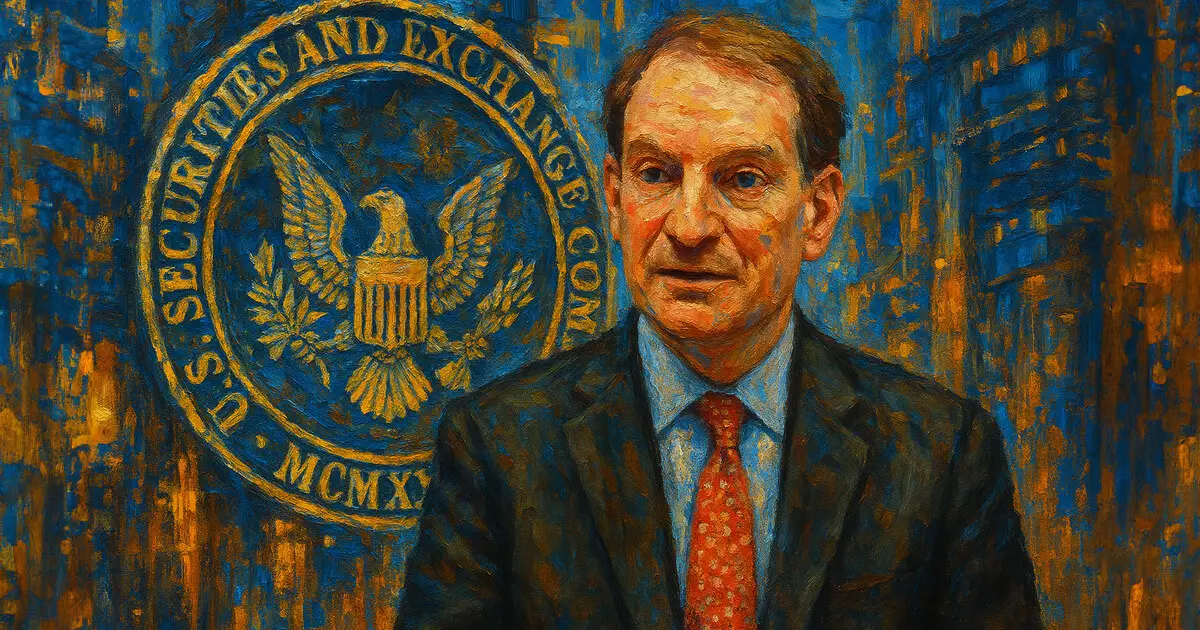The Securities and Exchange Commission’s recent announcement of “Project Crypto” signals a remarkable shift in U.S. financial oversight. From a centrist perspective that seeks balance, this effort appears both promising and perilous. On one hand, it promises clarity, potentially fostering a more secure environment for blockchain innovators and investors. On the other, it risks stifling the very entrepreneurial spirit that propelled cryptocurrencies into mainstream consciousness. The SEC’s desire to bring “on-chain” markets into the fold reflects a genuine acknowledgment of the digital economy’s growing importance, but the manner and speed of implementation could do more harm than good.
For years, skepticism from traditional regulators was justified by the anarchy and volatility that characterized early crypto markets. Now, the SEC aims to impose order — but at what cost? The notion of classifying tokens precisely—distinguishing securities from non-securities—is vital, yet fraught with ambiguities. Regulatory overreach could turn innovation into compliance hoops, curbing startups and discouraging risk-taking. Tapping into the concept of exemptions and safe harbors may offer temporary relief, but the broader mission to “normalize” cryptocurrencies risks alienating those who champion decentralized finance and individual sovereignty.
The Promise of Clarity Versus the Shadow of Overregulation
Chair Paul Atkins emphasizes that “most crypto assets are not securities,” a statement that resonates with the centrist viewpoint advocating for a pragmatic approach. Still, the very act of developing a framework to classify digital assets risks creating a complex regulatory labyrinth. The danger lies in blurring the lines between protective oversight and authoritarian control. If the SEC overreaches with heavy-handed rules, it could inadvertently push innovation offshore or into less regulated corners, defeating the purpose of modernizing U.S. markets.
Moreover, the initiative’s focus on offering “workable rules” for tokenized securities and on-chain systems assumes that clarity will naturally emerge. But clarity often comes at the expense of flexibility. As regulators attempt to adapt existing legal structures to this new frontier, there is a real threat they will impose outdated paradigms, stifling the dynamic, disintermediated essence of crypto. The push for integrated venues that combine traditional and digital securities could also entrench the future monopoly of large firms, frustrating smaller players and startup enthusiasts who thrive on open, competitive markets.
Balancing Investor Protection and Entrepreneurial Freedom
Self-custody remains a core value for many within the crypto community, representing individual liberty and control over assets. Atkins’s emphasis on updating custody rules while simultaneously enabling onshore token distributions and trading venues suggests a desire to empower investors. But does this approach sufficiently safeguard against the myriad risks involved? The reality is that increased regulation might commoditize investor safety but could also lead to complacency. Overly prescriptive rules risk creating a bureaucratic maze that many new entrants cannot navigate, driving innovation out of reach for the average entrepreneur or investor.
Furthermore, the notion of an “innovation exemption” cautions against inflexible rule enforcement, acknowledging that experimentation should be part of the regulatory landscape. While this can be a wise move, it also hints at a delicate political dance: how to maintain investor confidence without throttling the untested, high-reward frontier of on-chain finance. The challenge isn’t just crafting rules but ensuring they don’t become tools of protectionism, favoring entrenched players and legacy institutions at the expense of decentralized pioneers.
The Broader Implications for U.S. Leadership in Crypto
The SEC’s ambitious plans to rewrite the rules of on-chain finance must be viewed within the context of global competition. While the nation seeks to regain control over its markets, there is a real risk it may inadvertently cede ground to jurisdictions with more flexible, innovation-friendly policies. If America’s regulators are perceived as heavy-handed or inconsistent, crypto firms may relocate abroad, establishing offshore hubs that operate under looser standards.
Atkins’s focus on “reshoring” crypto companies and creating a domestic ecosystem is admirable, but it can only succeed if the regulatory environment is predictable and conducive to growth. Overregulation, with its tendency to freeze innovation, might produce short-term safety but at the expense of long-term competitiveness. The U.S. has an opportunity to lead by setting a balanced, thoughtfully dynamic framework—yet if the SEC’s current approach leans too far into control, the country risks being left behind in the burgeoning global crypto landscape.
The ongoing tension between regulation and innovation underscores an unavoidable truth: in the rapidly evolving world of digital assets, flexibility must be paired with prudence. The SEC’s Project Crypto could either become the blueprint for a sustainable, secure crypto economy or an overregulated battleground where entrepreneurs and investors alike find themselves hemmed in by red tape. The key to success lies not just in haste but in crafting regulations that adapt without suffocating, fostering a landscape where American ingenuity can thrive without undue fear of government overreach.



















Leave a Reply